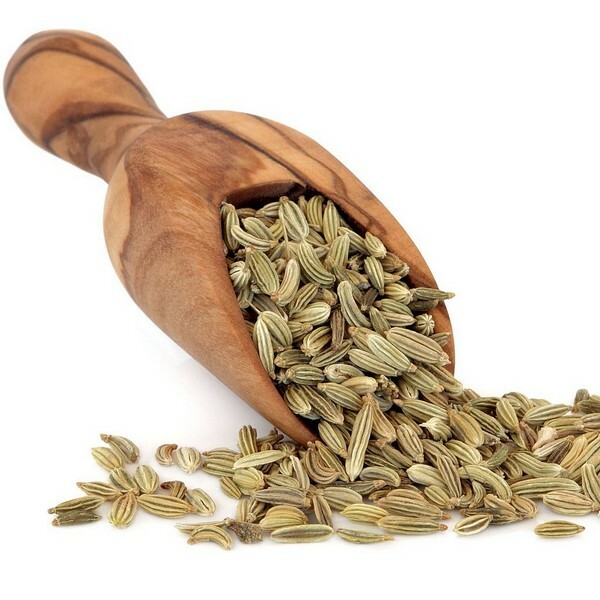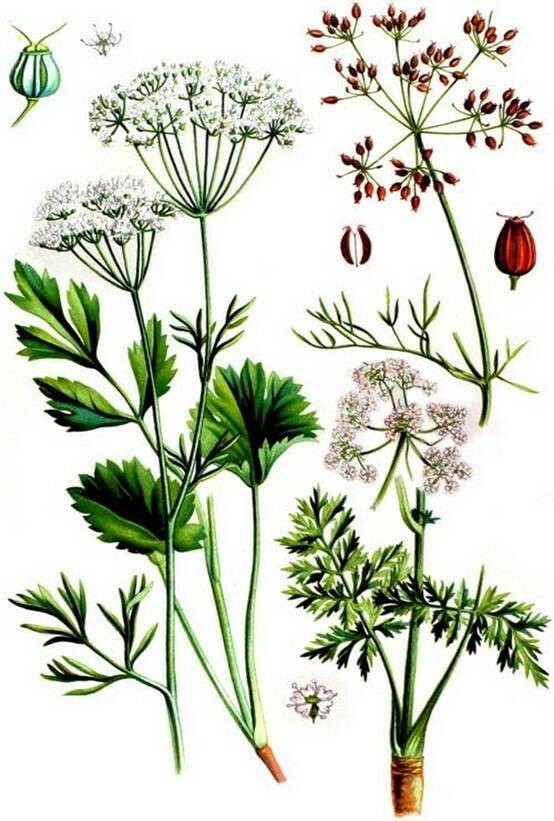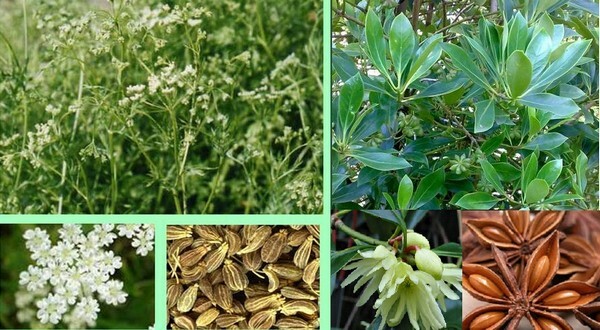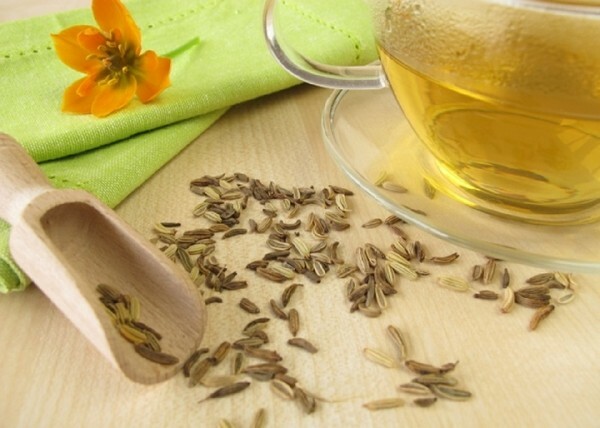- Botanical Description
- Difference from Badian
- Influence on the body
- Healing means
- Anise on the table
- Contraindications
Anise is both a spice, a medicine and an ingredient for aromatherapy. This plant has found wide application since ancient times: it was added to bread cakes to improve digestion and was often hung at the head of the bed for good sound sleep and cleansing the room of annoying insects. And what do they do with anise today?

Botanical description
Anise is an ordinary or anemia thigh, an annual herbaceous plant whose height can reach 50-60 cm. In the upper part of the stem there is a branch that forms an inflorescence in the form of an umbrella with severalLeaflets-wrappers and often with a covering sheet.
As can be seen in the photo, on the "umbrellas" of anise in the flowering period appear small flowers of white color. This period falls on June and July. Fruits plant in August-September. Its fruits are ground-gray semisweet eggs with a length of 3-5 mm.

. Ripe anise seeds should be quite dense. They are collected in dry weather early in the morning or in the evening, cutting with scissors along with umbrellas. After they are tied into small bundles and suspended in a draft. Well dried plants are threshed and sieved, the seeds are ventilated.
Distribution of
There is no reliable data on the homeland of anise, to date it is considered Lebanon. In order to obtain valuable seeds, it is grown in many countries of the world: in the south of Europe, in Mexico, Egypt and in Asia Minor.
On the territory of Russia anise can be found in the Kursk, Voronezh, Belgorod regions and in the Krasnodar Territory, where it grows as a cultural plant.
Difference from badyan
There is a plant that is often confused with anise - it's bad, and, more precisely, real buckthorn, or anise star. It is also a spice and its aroma is very similar to that of an anise ordinary. However, these cultures are different. And the differences are quite serious - from origin to biological characteristics. Plus, the anise has an earlier history and it was he who first became known to the Slavic peoples. Bad luck is brought much later.
Note! Because of the similarity of useful properties and taste qualities, the bellies were called star anise!
Let's take a closer look at the difference between anise and badge.
| Differences | Anise ordinary | Illicium verum |
| plant | Annual herbaceous | Evergreen wood |
| Rhode | bedrenets | Badian |
| family | Umbrella | Limonnikova |
| Fruit | earthlings gray dvusemyanny, ovoid | woody mnogolistovka |
| Leaves | incised-toothed, dlinnochereshkovye | Simple, leathery |
| Flowers | Small, white, five-membered, assembled in umbrellas | With double perianth and white corolla, multi-flecked, often with a red or pink shade |
| Spread | Southern Europe, Asia Minor, Mexico, Egypt | Southeast Asia |
 Anise on the left and baden in the right [/ caption]
Anise on the left and baden in the right [/ caption]
Effect on the body
Effect of anise on the body, its medicinal propertiesand contraindications are determined by essential oils that are part of the fruit, as well as vitamins C and P, fats, proteins, choline, sugars, coumarins, stigmasterol and valuable trace elements. These biologically active substances enable the plant to have the following effect:
- tonic;
- is a diuretic;
- is an anti-inflammatory;
- is antispasmodic;
- is antipyretic;
- expectorant.
Anise seeds are highly valued in many countries around the world. They are included in the composition of certain medicinal charges, such as gastric, pectoral, laxatives, anti-catarrhal and sudorific. Fruits can be used individually, for example, they improve the secretory capacity of the respiratory tract and intestinal motility, set up the digestive system and stimulate the appetite. Preparations based on the seeds of this plant are good for constipation, diarrhea, flatulence and spasms. They are able to stop intestinal bleeding, which can occur after surgery.
In addition, the fruit of anise, used as a spice, relieve the headache and symptoms of tachycardia. With competent therapy, they help to dissolve stones in the kidneys and to establish the functioning of this organ.

The healing properties of anise spread to bronchopulmonary diseases. For example, its essential oil can be a part of some mixtures for inhalations and candies stopping coughing. This product irritates the bronchi, secreting through their shell, causes an increase in secretion and provokes a reflex excitation of respiration. Anise broth shows itself well in the treatment of laryngitis, tracheitis, asthma, pneumonia and pneumonia.
Anis is also able to help women's health. With it, you can eliminate the delay of menstruation, and during lactation, strengthen lactation and increase the separation of milk. Decoction of fruits of anise and licorice root is often prescribed for diseases of the uterus and for the removal of a spasm of smooth muscles. It is also used to stimulate labor. A sweet tea with anise is a good tool for eliminating yellowness of the skin in women in labor.
In addition, this plant is able to enhance the action of antibiotics and stop nerve vomiting. Anise preparations soothe the heart palpitations and help to remove bad breath. These drugs show a powerful anti-inflammatory effect, and therefore often used to relieve the condition with inflammation in the urethra, which were provoked by diseases of the prostate and gonorrhea.

Anise application can alleviate the course of diseases such as pyelonephritis and cystitis. It is also often used to purify the liver and improve the functioning of the pancreas. And since the fruits of the plant exude an easy pleasant aroma, they are often used in aromatherapy, including in the composition of medicinal products and broths for flavoring.
Healing aids
- Decoction: put 4 teaspoons of seeds on a glass of water, boil for 5-6 minutes, filter. Take the finished product three times a day for 30 ml( 2 tablespoons).
Note! If you combine the anise with the egg whites, you get a very effective ointment from burns!
- If you delay the monthly and to increase the sex drive: grind the seeds of anise in flour and take 3 g or drink anise oil 3-4 drops.
- To improve the skin: put 2 teaspoons of aniseed beans on a liter of boiling water and leave for an hour under the lid. Filter and drink half the glass four times a day after eating.
- Tea with anise in flatulence, stomach problems and coughing: a teaspoon of dried grains pour 200 ml of steep boiling water and insist for 10 minutes. We filter and drink. A day you can drink a few cups of this tea.
- In case of an unpleasant smell from the mouth: on a glass of boiling water should be added a half tablespoons of anise fruit and leave for an hour under the lid. After this time, the product is filtered and used to rinse the mouth and throat in 1/3 of the glass every time before eating.
- General strengthening tincture: for a glass of good vodka or alcohol, diluted to 40 °, we put 40 g of anise fruits, close tightly and hold for about a week, can be up to 10 days. We take the finished product three times a day for about 20-23 drops.

Anise on the table
The use of anise in cooking is very popular. Dried fruits have a pleasant refreshing aroma and unobtrusive taste and therefore often take part in the manufacture of confectionery and bakery products, they are also added to cookies, muffins, gingerbread, sugars, various pickles, first courses, flavorings, compotes, porridges andDessert.
Fresh young anise leaves often act as ingredients for salads, or are part of the most delicious workings for meat, poultry and fish dishes. Anise as a seasoning is added to kvass and to fermented milk products, for example, in brynza. In addition, its seeds can often be found in salad dressings and various sauces, it is added instead of nutmeg to spinach and other greens.
In addition to the dishes, some varieties of alcoholic beverages are also prepared on the basis of anise. The most common are:
- Sambuca;
- Tsipuro;
- Pacharan;
- Pastis;
- Absinthe;
- Ouzo;
- Mastic;
- Pernod;
- Arak.

Contraindications
However, anis will not always show only medicinal properties, there are also certain contraindications to the use of funds on its basis. These include:
- chronic form of digestive system diseases;
- gastric and duodenal ulcer;
- is an allergy to anise;
- is an individual anesthetic intolerance.
In addition, during pregnancy and lactation, the intake of any anise preparations must be agreed with the physician. It is also not recommended to exceed the recommended dose, as this can lead to the development of skin allergies. And if you have never previously taken funds based on this plant, then therapy should start with small doses. And if the drug is transferred easily( without headaches, nausea and other unpleasant manifestations), then it is possible to proceed to its normal dosage.
